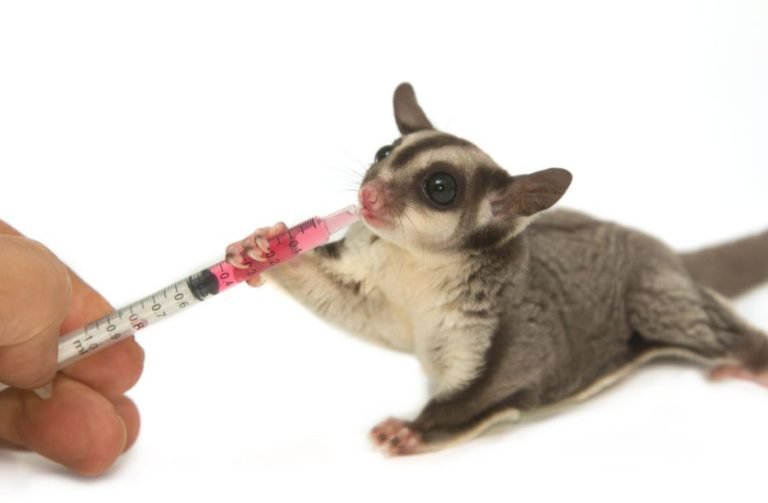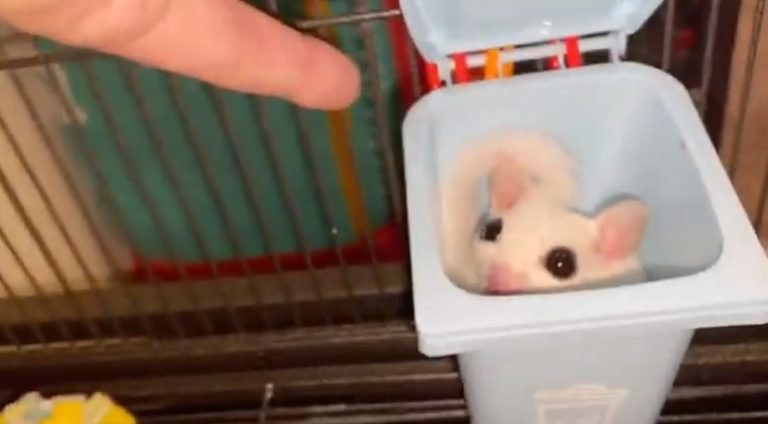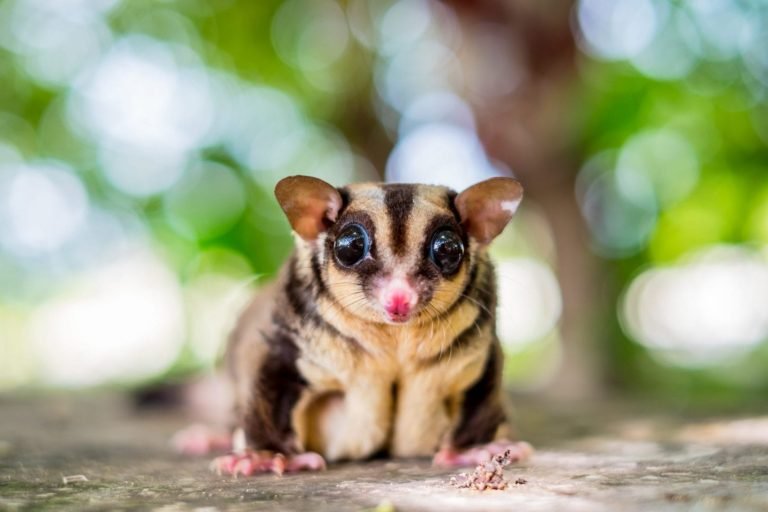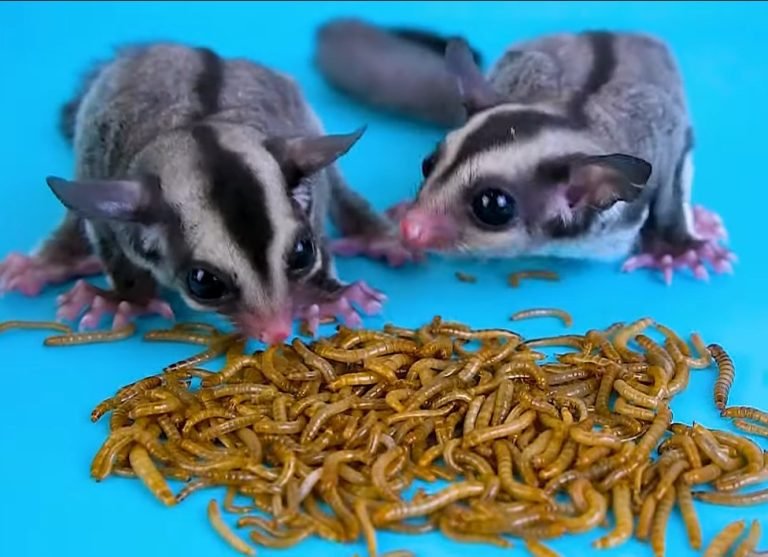Sugar Glider Colors Leucistic VS Albino Genetic Differences
Did you know that sugar gliders come in a wide array of captivating colors? From the mesmerizing ruby leu to the majestic lion, these tiny marsupials boast an enchanting palette. But what exactly sets apart leucistic and albino sugar gliders? Unraveling the genetic disparities between them reveals fascinating insights into their distinct hues and patterns.
In this blogpost, we will discuss Sugar Glider Colors leucistic VS Albino genetic differences. In the captivating realm of sugar glider color genetics, understanding the main difference between leucistic and albino is paramount. While both exhibit reduced pigmentation, leucistic gliders retain some coloration, while albinos lack pigment altogether. Delving into this intricate world allows us to appreciate the unique beauty of each variation.
Appreciating these genetic variations isn’t just about aesthetics; it’s vital for responsible ownership. By comprehending the differences between leucistic and albino sugar gliders, we can provide them with proper care tailored to their specific needs. So let’s embark on a journey through the kaleidoscope of sugar glider colors, uncovering the wonders hidden within their genes.
Join us as we dive deeper into this captivating topic – exploring breathtaking colors, unraveling genetic mysteries, and discovering what makes these adorable creatures truly one-of-a-kind.
Genetic Differences: Leucistic vs Albino Sugar Gliders
Leucistic sugar gliders and albino sugar gliders exhibit distinct genetic traits that result in contrasting appearances. Understanding the genetic differences between these two variations sheds light on how different genes affect the coloration of these marsupials.
The specific genetic mutation responsible for leucism in sugar gliders is known as the leucistic gene, often abbreviated as “leu.” This gene causes a reduction or absence of pigmentation in the fur, resulting in a lighter overall appearance. Leucistic sugar gliders have pale or white fur, with their eyes typically displaying a pink or blue hue.
On the other hand, albino sugar gliders possess a different genetic mutation that affects their pigmentation. Albinism is caused by a lack of melanin production due to a malfunctioning gene involved in its synthesis. As a result, albino sugar gliders have an entirely white or cream-colored coat, along with red or pink eyes due to the absence of pigment.
These genetic mutations occur sporadically and can be inherited by offspring from their parents. When two leucistic sugar gliders mate, they can produce both leucistic and non-leucistic offspring. Similarly, breeding two albino sugar gliders can yield albino and non-albino offspring.
It’s important to note that while leucism and albinism both affect pigmentation, they are distinct conditions with separate underlying genetic causes. Leucism primarily impacts the distribution of pigment cells, whereas albinism affects melanin production altogether.
Understanding Sugar Glider Colors and Variations
Sugar gliders are known for their stunning array of colors, which can vary greatly from one individual to another. These variations are influenced by a combination of genetic factors, environmental conditions, and selective breeding. Let’s delve into the fascinating world of sugar glider colors and explore the differences between leucistic and albino variants.

Factors Affecting Sugar Glider Coat Color
The wide range of colors seen in sugar gliders can be attributed to several factors:
- Genetics: Genetic variations play a significant role in determining the coat color of sugar gliders. Different combinations of genes result in various pigments, leading to diverse hues such as gray, brown, black, white, and even rare shades like platinum.
- Environment: Environmental factors can also impact a sugar glider’s coat color. Sunlight exposure, temperature fluctuations, and diet may influence the intensity or brightness of certain colors.
- Wild Populations: Natural variations within different populations of wild sugar gliders contribute to the diversity of coat colors observed in these creatures. Certain regions may have distinct color patterns due to geographical isolation or specific adaptations.
Leucistic vs Albino Sugar Gliders

Leucism and albinism are two genetic conditions that can affect sugar glider coat color. Here’s how they differ:
- Leucistic Sugar Gliders: Leucism is a condition characterized by reduced pigmentation in an animal’s skin, fur, or feathers. Leucistic sugar gliders typically display pale or diluted versions of their normal coloration. They retain some pigment but appear lighter overall.
- Albino Sugar Gliders: Albino individuals lack melanin entirely due to a genetic mutation affecting pigment production. Consequently, albino sugar gliders have white fur with pink eyes due to blood vessels showing through.
Selective Breeding for Color Variations
Selective breeding has played a significant role in creating diverse color variations in captive-bred sugar gliders. Breeders have selectively chosen individuals with specific coat colors to produce offspring with desired traits. This practice has resulted in an array of unique and eye-catching color morphs, including mosaic, platinum, caramel, and many more.
Conclusion
In conclusion, understanding the genetics behind sugar glider color variations is crucial for any enthusiast or potential owner. The genetic differences between leucistic and albino sugar gliders play a significant role in determining their distinct colors.
Leucistic sugar gliders have a reduced amount of pigment, resulting in a lighter appearance with pale fur and bright eyes. On the other hand, albino sugar gliders lack melanin entirely, leading to a white or cream-colored coat and red or pink eyes.
By grasping these genetic differences, you can better appreciate the unique characteristics that make each color variation special. Whether you’re considering adding a sugar glider to your family or simply want to expand your knowledge on these fascinating creatures, understanding their colors and variations will enhance your experience.
To delve deeper into this subject, it’s recommended to consult reputable sources such as scientific studies or expert opinions. This will ensure you obtain accurate information about sugar glider genetics and avoid misconceptions.
Remember,It’s essential to prioritize their well-being and welfare above all else. Proper care, nutrition, and enrichment are vital factors in maintaining their health and happiness.
So why wait? Dive into the world of sugar gliders’ genetics today! Explore the incredible variety of colors they possess and deepen your understanding of these captivating creatures.
FAQs
1.Are leucistic sugar gliders more common than albino ones?
Leucistic sugar gliders are generally more common than albino individuals. However, the prevalence may vary based on geographic location and breeding practices within specific populations.
2.Can leucistic or albino sugar gliders be bred intentionally?
Yes, leucistic or albino sugar gliders can be bred intentionally through selective breeding programs. However, it is crucial to ensure responsible breeding practices that prioritize the health and well-being of the animals involved.
3.Do leucistic and albino sugar gliders require any special care?
Leucistic and albino sugar gliders do not require any specific care solely based on their color variations. However, it is important to provide them with the same level of care, nutrition, and environmental enrichment as any other sugar glider.
4.Can the color of a sugar glider change over time?
No, the color of a sugar glider does not typically change over time. The coat coloration is determined by genetics and remains relatively consistent throughout their lifespan.
5.Are leucistic or albino sugar gliders more prone to health issues?
Leucistic and albino sugar gliders are not inherently more prone to health issues compared to other color variations. However, proper care, diet, and regular veterinary check-ups are essential for maintaining their overall well-being.
6.Can I determine a sugar glider’s color variation at birth?
The specific color variation of a sugar glider may not be immediately apparent at birth. It may take several weeks for their true colors to become fully visible as they mature.






